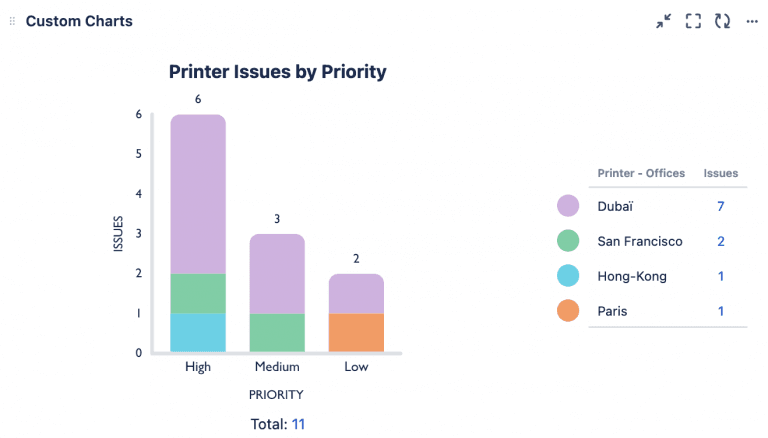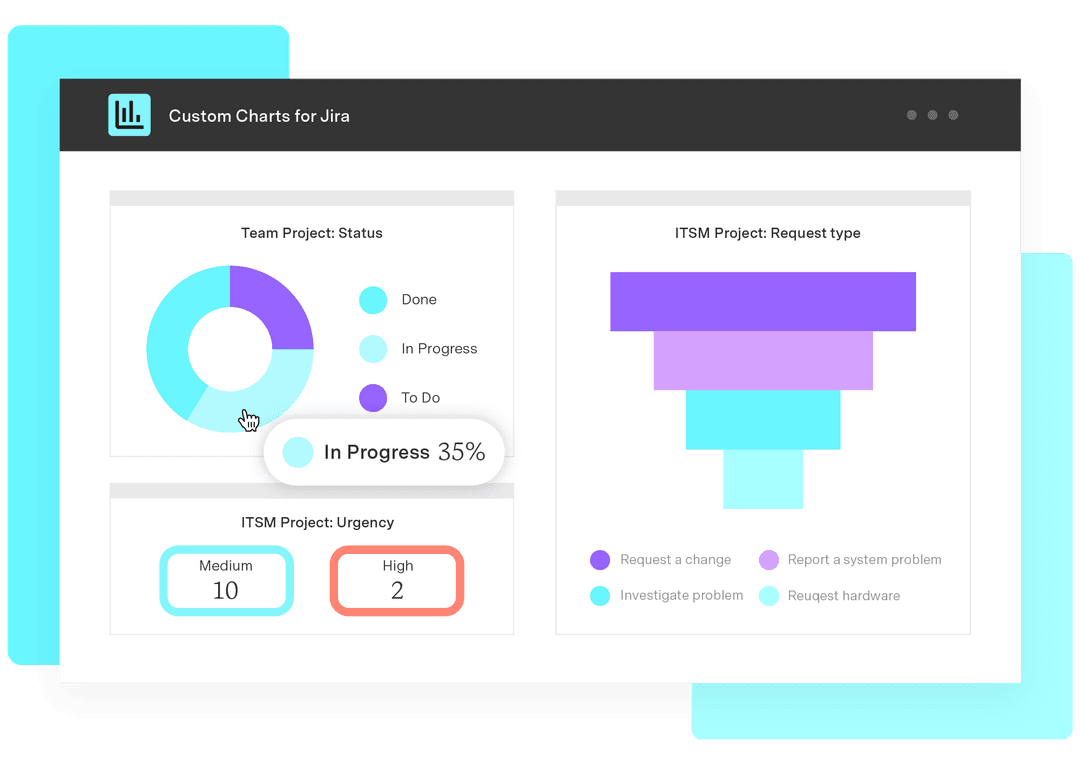Better ITSM: Make Jira Reports with External Data
Tempo Team
IT service management (ITSM) involves maintaining assets such as computers, servers, phones, and software applications. Information about these assets is typically stored in a database that’s separate from your ITSM support tickets. But what if the two were integrated? Then asset information would be readily available for your customers and support agents without them having to go look for it. Even better, you could report on those assets and give your incident and problem management a powerful boost.
For support teams using Jira Service Management (JSM), the Atlassian Marketplace app Elements Connect takes asset and customer information from any external database and pulls it inside Jira. Once installed, you can use Elements Connect to populate custom fields in Jira with data from any source: SQL (Structured Query Language) databases, LDAPs (Lightweight Directory Access Protocols), REST APIs (Representational State Transfer Application Program Interfaces), and even Jira itself.
Once you’ve associated your Elements Connect items with your project’s request types, you can start reporting on them. And if you use Custom Charts for Jira for enhanced reporting on Jira dashboards, you’re in luck, because Custom Charts integrates with Elements Connect.
Having your asset and customer data inside Jira means you can use Jira to track it. This saves huge amounts of time previously spent cross-checking spreadsheets and other record-keeping systems. It’s much easier to troubleshoot technical problems, order replacement parts, and keep on top of software licensing and expiration dates if your asset and service management systems are talking to one another.
Raising and managing support requests is quicker
Let’s say your ITSM team manages and maintains printers across a dozen global offices. With Elements Connect installed in Jira Service Management, you can configure it to pull in data about those machines. It means you’ll be able to open a JSM ticket and select the office where the printer is, together with the exact location of the printer in the building. Then the ticket will automatically populate with things like the make, model, and serial number of the printer, along with any maintenance and support data that you’ve configured Elements Connect to pull in.
The Elements Connect integration makes it easier for the customer to raise a support request, because they don’t have to enter those details manually. It’s also quicker for the support agent, who doesn’t have to go hunting through spreadsheets to find the right printer.
Improved tracking of incidents and problems with JSM reports
With asset information incorporated into your service project, you’re able to report on those assets and see trends. Then you can make decisions based on those trends. For example, there are a number of JSM reports you can make that can help you improve problem and incident management.
Building a problem management dashboard in Jira Service Management
To make a Jira dashboard that helps JSM support teams investigate and identify problems, you could start by adding a report that shows which assets attract the most maintenance requests. Continuing with the printer example, you could make a report showing which printer models break down most often.
Available natively is a Filter Results gadget like the one below, which uses the JSM Elements Connect integration to show which printers are experiencing the most breakdowns in a simple list.

However, by taking advantage of the integration between Elements Connect and Custom Charts for Jira, you can do a lot more than this. For example, you could build a bar chart like the one below, and be able to change colors and labels, rearrange the bars, and show/hide any data you don’t want to see.

To make this bar chart we have selected the Elements Connect custom field Printer from the Chart By dropdown. This is a much more visual and engaging way of showing which assets are the most problematic, immediately provoking a discussion as to why. Based on these results, it’s likely that the Epson WorkForce WF-2930 is past its prime and those machines ought to be replaced.
You could also use location data from Elements Connect to produce a 2D stacked bar chart showing the priority of issues per office/department. This would tell you if certain offices appear to have a more urgent need than others.
To create the stacked bar chart below in Custom Charts for Jira, you would select Priority from the Chart By dropdown and select the Elements Connect custom field Office Location from the Group By dropdown.

As you can see, the Dubai office has the most printer issues, and most of those are high-priority. This could suggest that they do a higher volume of printing than other offices, and therefore could use some extra machines. That way, if one were to go down, their requirement for a technician to come out and fix it would be less urgent.
Building an incident management dashboard in Jira Service Management
You can also use Custom Charts for Jira to improve incident management in JSM. Here are two examples of charts you could build for a Jira dashboard focused on your incident management.
First, you could generate an Issue List table using Elements Connect data, as below. Using the broken printer example, support agents will see the make, model, and location details for the specific printer, expediting incident response by enabling them to dispatch a technician straight away, furnished with the right information.

Next, you could build a tile chart highlighting what issues need prioritizing. The chart below uses the statuses provided in the built-in Jira Service Management templates, but you can create your own custom statuses in JSM and reflect these in your charts as well.
So, the chart below shows the issues most in need of agent attention, in particular, the Escalated issues, which we’ve customized to be red and which need working on first. A tile chart like this is good for helping support teams respond more quickly to incidents.

More general ITSM dashboards
The beauty of the Jira dashboard is that you can create as many dashboards as your team need to focus and improve their work.
Although dashboards for incident and problem management, two core ITSM processes, are useful and important, you’ll also need a more general ITSM dashboard. One that looks at how your support team is performing and whether your customers and users are happy. After all, the primary goal of any support team is customer satisfaction.
So, build a dashboard with charts showing whether you’re meeting the expectations stipulated in your service-level agreements (SLAs). Out of the box you can make basic line charts for SLAs configured for particular service projects, although that’s the only chart you can build and the data won’t span multiple projects. To view SLA performance across multiple projects and make any kind of chart you like, you’ll need Custom Charts for Jira.

You should also add reports on the most obvious indicator of customer satisfaction: your customer satisfaction (CSAT) ratings. The native report is a simple table that’s very limited, but with Custom Charts, you can make CSAT bar charts and pie charts comparing ratings across customer organizations/offices and on a per-assignee basis. This drives discussions about the reasons why certain customers might be happier than others, and whether a particular support agent might need some extra training.

Our previous articles look in more depth at some general reports that Jira Service Management support teams will find useful, along with more specific and granular insights into your ITSM.
You can also find out more about the SLA reporting functionality that comes with Custom Charts for Jira and see what kinds of charts you can make with it.
Access our joint event video with Elements to learn how support teams gain visibility and efficiency by using Elements Connect with Custom Charts for Jira.











































